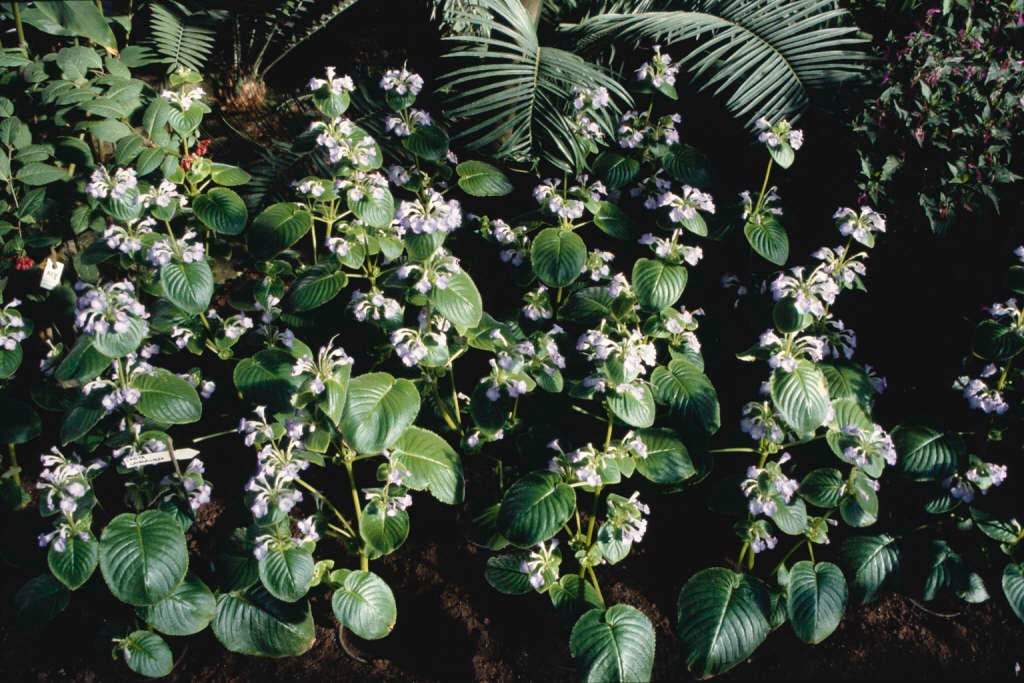Microchirita lavandulacea
lavender microchirita
An erect annual with hairy elliptic leaves to 20cm in length, and white-throated, tubular funnel-shaped, light violet-blue flowers 3cm across in summer and autumn

Size
Ultimate height
0.5–1 metresTime to ultimate height
1–2 yearsUltimate spread
0.1–0.5 metresGrowing conditions
Moisture
Well–drainedpH
Acid, Alkaline, NeutralColour & scent
| Stem | Flower | Foliage | Fruit | |
| Spring | Green | |||
|---|---|---|---|---|
| Summer | Blue | Green | ||
| Autumn | Blue | Green | ||
| Winter |
Position
- Partial shade
Aspect
South–facing or East–facing
Exposure
Sheltered Hardiness
H1CBotanical details
- Family
- Gesneriaceae
- Native to GB / Ireland
- No
- Foliage
- Deciduous
- Habit
- Bushy
- Genus
Microchirita are a genus of annual plants native to India and the Himalayas. Most cultivars have yellow flowers and foliage that is either plain green or marked with red. Many species have an unusual crest-like flower head emerging from the leaf, with flowers opening in sequence.
- Name status
Correct
- Plant range
- Asia
How to grow
Cultivation
Grow in well-drained, humus-rich, gritty soil in partial shade.
Propagation
Propagate by seed sown under glass at a temperature of 19-24°C in late winter to spring. Plant out when danger of frost is over
Suggested planting locations and garden types
- Patio and container plants
- Sub-tropical
Pruning
Cut back after flowering
Pests
May be susceptible to rosemary beetle and cuckoo spit (froghoppers)
Diseases
May be susceptible to stem rot in damp conditions
Love gardening
Sign up to receive regular gardening tips, inspiration, offers and more
View our Privacy Policy
Get involved
The Royal Horticultural Society is the UK’s leading gardening charity. We aim to enrich everyone’s life through plants, and make the UK a greener and more beautiful place.